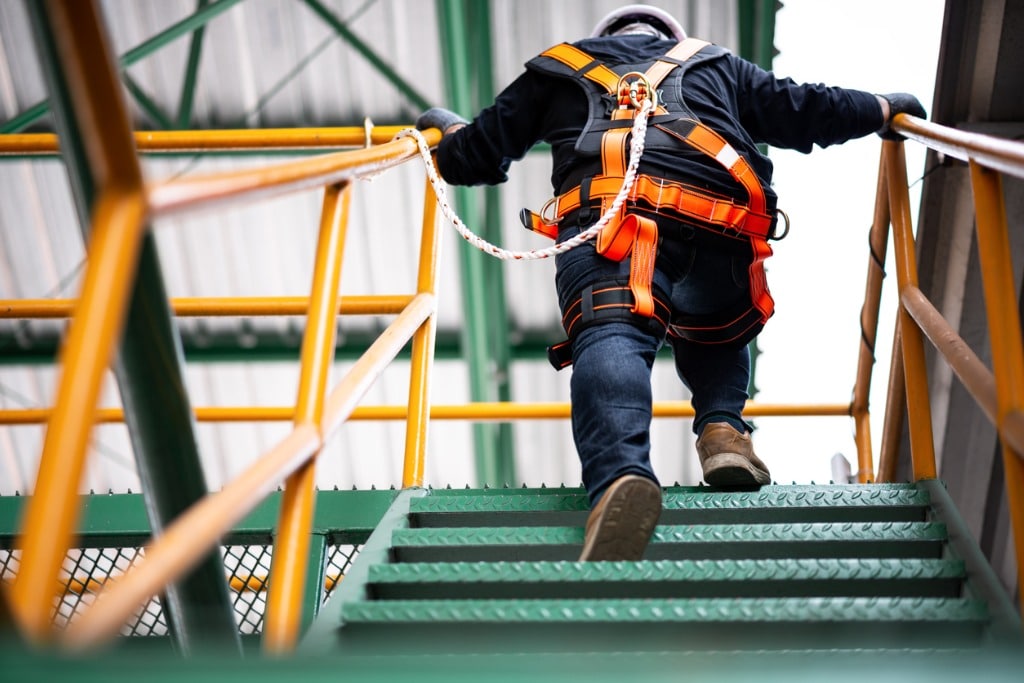Construction sites can be hazardous places to work. When employers and their workers aren’t aware of the many risks present, it can result in serious accidents. Construction workers are at risk of serious injury and even death when it comes to ineffective safety guidelines.
There are also financial implications associated with deaths and injuries like missed deadlines, inefficiencies, lawsuits, and damaged reputations. Following some simple tips can help keep your workers safe and protect your business.
Why Construction Site Safety Is Essential
Construction site safety is a federal requirement. If your business is not following OSHA guidelines, it could face serious fines and might even get sued by workers or their families.
The construction industry is one of the most dangerous in terms of workplace accidents and fatalities. If your business has too many of these, its insurance premiums will become unaffordable, and your reputation among workers and potential clients will begin to suffer.
10 Construction Site Safety Tips to Keep Your Workers Safe
There are many things your construction business and its workers can do to stay safe on the job. These essential tips will help you keep your workers safe and sound.
1. Train Workers Properly
Construction site safety begins with proper training and documentation. Workers should be trained for every phase of the construction process. For example, construction workers should be required to participate in a 10 hour OSHA program, which is an online safety education course. Employers may also want to have workers trained in first aid and CPR so that they can react appropriately in case of an emergency.
2. Wear Personal Protective Equipment
Personal protective equipment (PPE) is vital on construction sites. Everyone on the team must wear a helmet, gloves, and safety glasses whenever necessary. These items protect workers from falling objects, projectiles, electrical hazards, and much more.
You also want to make sure that every worker is wearing the proper clothing to work, which can include pants and steel-toed shoes. These items can lessen the severity of injuries that occur on a job site.
3. Provide Clear Instructions
A contractor induction or site induction should be present on every construction site. This enables existing and new workers to familiarize themselves with the operations on a job site. Before each work shift begins, it’s a good practice for supervisors to conduct informal toolbox chats to relay any changes on the job site and remind workers of health and safety instructions.
4. Keep a Tidy Worksite
Construction work can be disorganized and messy. Unfortunately, slip/trip and fall accidents are incredibly common on these job sites. You can eliminate many of these accidents and make your workplace more efficient by keeping your work area tidy throughout the day. Pay close attention to access areas that may be used for escape in an emergency.
5. Use Caution When Lifting
Strains and sprains are common construction workplace injuries because workers lift and move heavy materials. Train your workers to use proper care when lifting or transporting heavy objects. Specifically, it’s important to bend at the knee instead of the back and minimize twisting of the body while moving heavy items.
6. Limit Work Area Crowding
It’s not uncommon for construction sites to get crowded with workers and equipment. When they become overcrowded, confusion and missed signals can happen, resulting in accidents and injuries. The best and safest strategy is to limit the number of workers in busy areas. If heavy equipment is in use, make sure there is also a spotter on the ground who can watch for wayward hazards to reduce the chances of accidents.
7. Understand Fall Safety
Some of the most serious and deadly construction site accidents involve falls. Workers should be able to follow established procedures to prevent falls and minimize hazards. Employers must designate a competent person to provide fall safety training on topics like fall protection systems and personal fall arrest systems.
8. Never Tamper With Equipment
A hammer can’t dig a trench, and a drill can’t cut a piece of plywood. Workers should be trained to use the correct tools for the task. Some safety issues are basic, but proper training will teach your workers not to alter machinery, remove machine guards, or take down scaffold ties or guard rails just to get a job done.
Workers also shouldn’t try to fix defective equipment unless they are competent to do it. Finally, if a piece of equipment is broken or has been altered, your workers should always report it.
9. Pay Attention to Surroundings
Weather and other dangerous worksite conditions can cause serious construction accidents. Even the most experienced construction workers become vulnerable when the weather conditions become hazardous. At the same time, train workers to keep an eye out for known workplace hazards, like trenches and electrical wires.
10. Report Accidents and Hazards
Workers should be required to report accidents to their supervisor immediately. Waiting too long after an accident can complicate injuries and make circumstances more difficult to investigate. Furthermore, employees should be encouraged to report suspected workplace hazards or any near-misses. Management can’t do anything about serious safety issues if they don’t know about them.
Contact New Lyfe Accounting to Improve Efficiency in Your Construction Business
Running an efficient and productive construction business can be challenging. In addition to focusing on construction safety matters, efficiency and productivity remain primary concerns.
New Lyfe Accounting offers effective and qualified CFO services for construction companies. We are much more than just bookkeepers and accountants. Our team of professionals acts as your support system and financial partner to help your business grow. Reach out to us to schedule a free consultation and learn more about our unique services.



